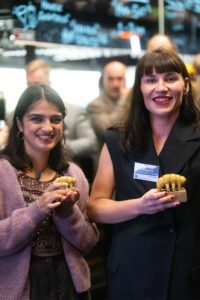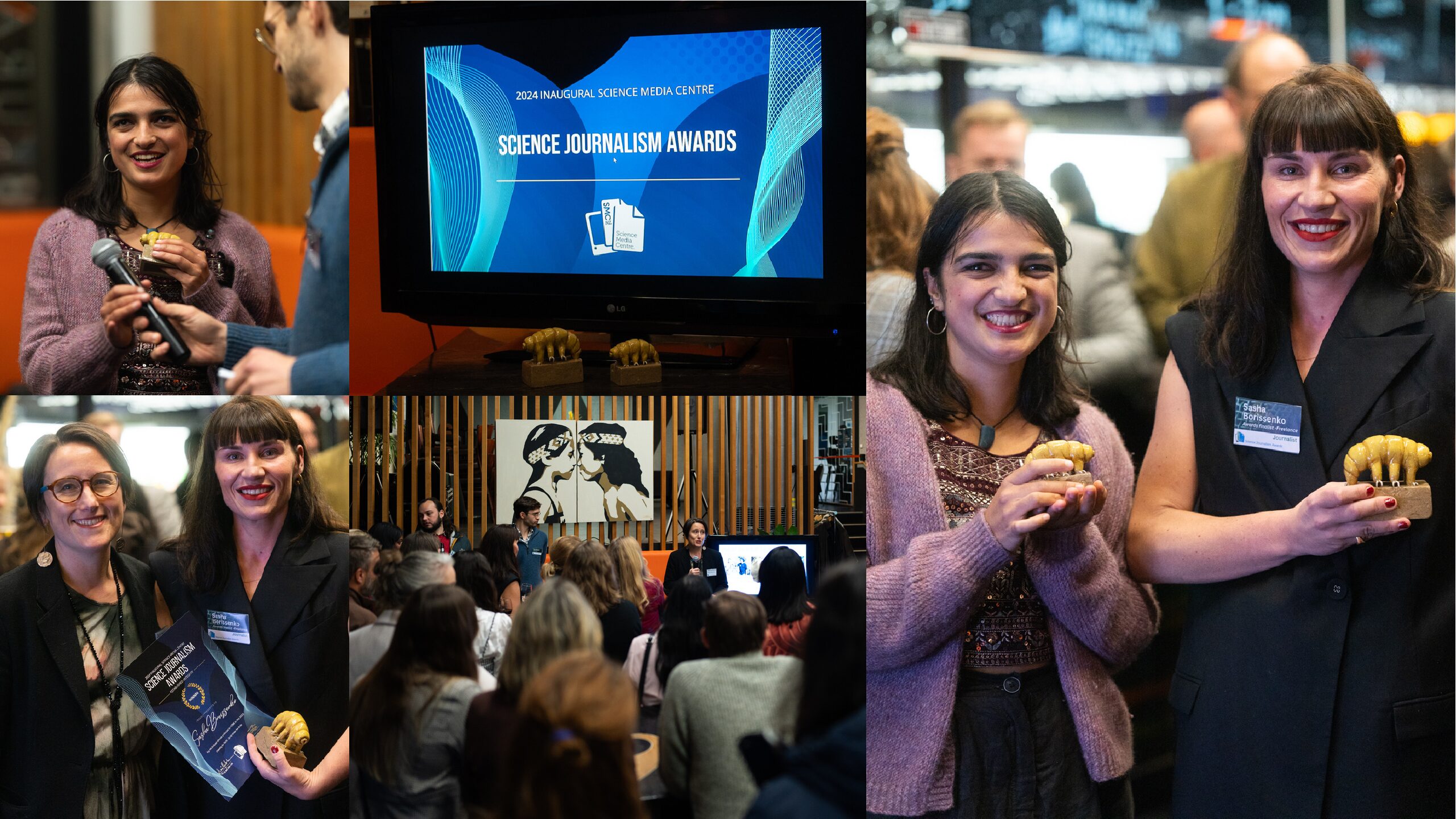A podcast investigating the social tensions and public health barriers to weight loss surgery and a long-form feature article breaking down the skyrocketing rates of shortsightedness in children took home top honours at last night’s inaugural Science Journalism Awards.

Freelance journalist Sasha Borissenko’s Episode 5: Going Under the Knife of her ten-part Chewing the Facts podcast series, with support from NZME and NZ On Air, won the Established Journalist Category.
One of the nominators said the series has gained traction among health officials, and resulted in policies being reviewed. Judges said it was a great piece of science communication and praised the careful and ethical way Sasha approached the topic.
The Spinoff journalist Shanti Mathias won the Emerging Journalist prize for her piece “Staring down the ‘silent epidemic’ of myopia in children“. The judges were impressed with how ‘on-the-scene’ the reporting was, including the voices of school students and the team running the vision-checking bus.
The 2024 Science Journalism Awards celebrate excellent reporting on science-related topics across all forms of media.
New Zealand Science Media Director Dacia Herbulock said the awards were created in an effort to recognise excellent science journalism in Aotearoa in what’s been a challenging year for the field.
“We designed the awards to welcome entries that explore any aspect of science, tech, innovation and research. Effectively any topic involving science and its impacts on the communities it reaches,” Dacia said.
“Even if a journalist doesn’t see themselves as a science reporter per se, chances are they covered one or more of the subjects in the wide-ranging criteria for these awards.”
The judging panel was blown away by the large number of impressive applications for the awards, and Dacia said it was a difficult task even whittling down the initial 58 entries down to a shortlist.
“We want to extend a big thank you to the judging panel for their time and support reviewing this year’s entries: freelance science writer Veronika Meduna, Professor Ben Kennedy of the University of Canterbury, and Dr Sarah-Jane O’Connor of Victoria University of Wellington. Additional thanks to Fox Meyer for his help as awards coordinator,” Dacia said.
“We also want to thank all those who took the time to nominate their favourite science journalism piece for the 2024 round.
“We can’t wait to see your nominations when submissions open again next year!”
Full profiles of this year’s finalists available here.
* Our tardigrade trophies were designed and sculpted by Wellington-based artist Annaliese Rosa. The artist chose the charismatic micro-animal as a symbol of science journalism’s ability to capture the public’s hearts and minds.
